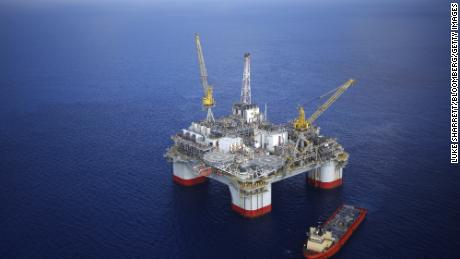(CNN)For 15 years, oil from one particular spill has been leaking into the Gulf of Mexico.
A new federal study estimates that each day, about 380 to 4,500 gallons of oil are flowing at the site where a company's oil platform was damaged after a hurricane. That's about a hundred to a thousand times worse than the company's initial estimate, which put the amount of oil flowing into the ocean at less than three gallons a day.
The report, released this past week and written by scientists at the National Oceanic and Atmospheric Administration and one at Florida State University, also contradicted assertions from the Taylor Energy Company about where the oil was coming from.
The leak started in 2004, when an oil platform belonging to the Taylor Energy Company was damaged by a mudslide after Hurricane Ivan hit the Gulf of Mexico. A bundle of pipes and wells sank to the ocean floor and became partially buried under mud and sediment.
To respond to the leak, Taylor Energy tried to cap nine of the wells and place containment domes over three of the plumes in 2008.
But after local activists observed more oil slicks near the site of the Deepwater Horizon Spill in 2010, the Taylor oil spill started getting national attention. And last May, the US Coast Guard installed a containment system that has been collecting 30 barrels, or about 1,260 gallons, a day to help catch the oil that's continuing to surge in the ocean.
Study contradicts rig owner's conclusions
Taylor Energy liquidated its oil and gas assets and ceased production and drilling in 2008, and says on its website that it exists solely to respond to the spill. It maintains that any oil and gas now leaking at the site is coming from oil-soaked sediment and bacterial breakdown of the oil.
The federal government's study suggests otherwise.
"This shows it is in fact coming from the reservoirs, from these oil pipes, and not from the remnant oil at the bottom of the ocean," Andrew Mason, one of the study's authors, told CNN.
To reach that determination, scientists collected samples from under the ocean's surface using two methods. Previous studies had either used samples from oil slicks on the ocean surface or measurements from flying over the site.
Using an acoustic device, scientists estimated that 9 to 47 barrels, or about 380 to 1,900 gallons, of oil are leaking daily. Another device called a bubblometer put that estimate at 19 to 108 barrels, or about 800 to 4,500 gallons, a day.
The report notes that the ranges are estimates and don't necessarily represent a final definitive government estimate of the oil being released at the site.
Efforts to stop the leak
Mason called the US Coast Guard's containment system "a great step forward," but said that it still allows some oil to leak out. He also cautioned that it wasn't a permanent fix, given that the containment system would begin to degrade the longer it's in the ocean, and said that authorities needed to go in and plug the remaining 16 wells.
Taylor Energy has claimed that intervening further could release more oil and negatively affect the environment.
In a statement to CNN, the company said it had not seen the data in the latest government report and could not verify its accuracy. It added that it "continues to advocate for a response that is grounded in science and prioritizes the well-being of the environment."
Mason said that the study helps establish the extent of the problem.
"This has been a good step forward in definitively saying what's going on at this site so we can move on from saying 'There's no problem,' to saying, 'All right, there's a problem and how do we fix it now?'" he said.








